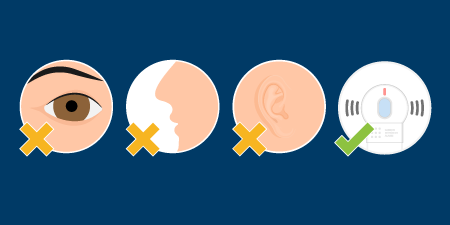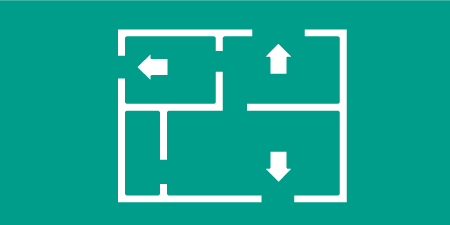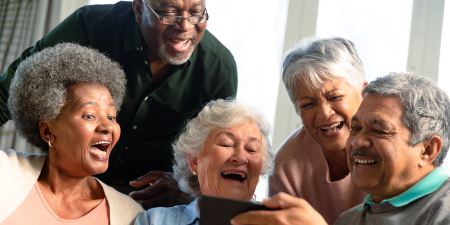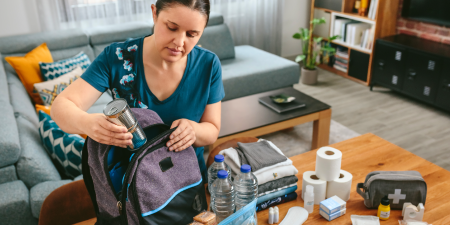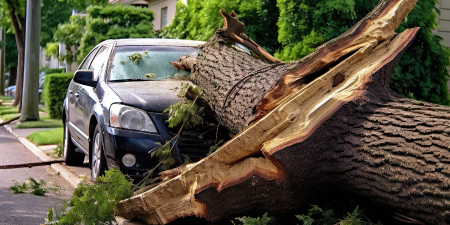
On this page
Smoke alarms
Every second counts when escaping a home fire. During a fire, a smoke alarm can give you one to two minutes to escape safely.
| Install smoke alarms - It's the law |
Failure to comply with the Fire Code smoke alarm requirements could result in a ticket for $235 or a fine of up to $50,000 for individuals or $100,000 for corporations. |
| Maintain smoke alarms |
|
Carbon monoxide — The Silent Killer
Carbon monoxide is known as the silent killer because it is colourless, odourless, tasteless, and non-irritating. A carbon monoxide alarm will alert you to the presence of this dangerous gas.
| Install carbon monoxide alarms - It's the law |
|
Carbon monoxide alarms are mandatory in all homes across Ontario, and we recommend installing at least one on every storey of your home. If your home has a fuel-burning appliance, a fireplace, or an attached garage, you must have a working carbon monoxide alarm outside each sleeping area. Fuel-burning appliances include furnaces, hot water heaters, gas or wood fireplaces, portable fuel-burning heaters and generators, barbecues, stoves and vehicles. If you live in an apartment or condo building with a fuel-burning appliance, install a carbon monoxide alarm beside each sleeping area. If your building has a service room, carbon monoxide alarms must be installed in the service room and adjacent to every sleeping area above, below and beside the service room. If there is a garage, carbon monoxide alarms must be installed beside each sleeping area above, below and beside the garage. |
|
Maintain carbon monoxide alarms |
|
Home escape plan
Every family needs a home escape plan (PDF) that includes alternate escape routes, a plan to help each other and a meeting place. We ask all residents to create a home escape plan and practise what to do with your family.
| Simple steps for home fire escape planning |
|
Emergency Preparedness
Preparing for an emergency is something all residents should do. By taking a few simple steps today, you can become better prepared to face a range of emergencies and look after your family anytime and anywhere. Remember, emergencies can happen at any time, day or night and in any season.
If an emergency happens in your community, it may take emergency response workers some time to get to you. You should be prepared to take care of yourself and your family for a minimum of 72 hours.
| Know the risks |
|
Knowing what to plan for and expect is key in an emergency. Across Clarington, we face a number of hazards, such as flooding, extreme heat, winter storms, thunderstorms and tornadoes. In addition to natural disasters, there are other types of risks, such as power outages and industrial or transportation accidents. Learn how to prepare for different types of emergencies. |
| Make a plan |
|
Every household needs an emergency plan. It will help you and your family know what to do in case of an emergency. Your family may not be together when an emergency occurs. Plan how to meet or contact one another, and discuss what you would do in different situations. It only takes 20 minutes to complete a personalized plan online. To fill out your home emergency plan, you will need to think about the following:
Keep your emergency plan in an easy-to-find, easy-to-remember place (for example, with your emergency kit). Photocopy your plan and keep it in your car or at work. |
| Get an emergency kit |
|
In an emergency, you will need some basic supplies. You may need to get by without power or tap water. Be prepared to be self-sufficient for at least 72 hours. Make sure your kit is easy to carry and everyone in the household knows where it is. Keep it in a backpack, duffle bag or suitcase with wheels, and keep it in an easy-to-reach place, such as your front hall closet. Basic emergency kit
Recommended additional items
Check your kit once a year to ensure contents are up to date. Re-stock as needed. For more information, visit the GetPrepared.ca website. |
Ensuring everyone's safety
Spring
Fall
More resources
Fire safety begins with you. Learn and share safety tips for your home and work.
|
Candle safety tips |
||||||||||||
|
Battery-powered LED candles or lanterns are a safer alternative to traditional candles. They provide light without the risk of an open flame and can be used as a safer lighting option during a power outage. For traditional candles, keep these tips in mind:
Learn more about Candle Safety Tips on the Health Canada website. |
||||||||||||
|
Home health care systems |
||||||||||||
|
Home health care systems like medical devices may use electricity to function correctly. Therefore, it’s essential to have a backup power plan to ensure continuous operation during a power outage. Being prepared and having a plan for backup power during power outages is crucial for maintaining the functionality of home healthcare systems. Stay informed, communicate with your health care provider, and always prioritize safety.
|
||||||||||||
|
Fire alarm and security monitoring companies |
||||||||||||
|
During a scheduled power outage, consider contacting your fire alarm and security monitoring companies to inform them. Your proactive communication can help ensure the smooth functioning of your fire alarm and security systems during and after the power outage and contribute to the safety and security of your building and its occupants. By notifying your fire alarm and security monitoring companies in advance, they can be prepared to provide troubleshooting support remotely, if possible, dispatch necessary service calls to address any issues, adjust staffing levels and coordinate with local authorities. |
||||||||||||
|
Sump pumps |
||||||||||||
|
Sump pumps prevent basement flooding, especially during heavy rains or power outages. Having a backup power source, monitoring water levels, and keeping your sump pump well-maintained can help reduce the risk of water damage to your home.
|
||||||||||||
| Kitchen safety | ||||||||||||
|
More fires begin in the kitchen than in any other room in the home. In fact, residential cooking is one of the leading causes of fire-related deaths. The majority of kitchen fires start with cooking equipment, primarily stoves and microwave ovens. Remember to:
Smother grease or pan fires
What if I accidentally make contact with a flame or hot surface?
How safe is my microwave oven?
What other steps can I take to prevent kitchen fires?
Fire extinguishment and evacuation
Read more cooking safety tips. |
||||||||||||
| Fireworks safety | ||||||||||||
|
To minimize the risk of fire and injury, we do not recommend family fireworks or informal neighbourhood displays. If you still choose to have family fireworks or an informal neighbourhood display, consumer fireworks must only be discharged in accordance with By-law 2015-047. Safety tips
|
||||||||||||
| Workplace safety | ||||||||||||
|
You need to know the emergency and evacuation plans for your office or workplace. Fire can break out anywhere, including where you work. Each year numerous fires in the workplace cause injury and property loss. If a fire started in your office or in the building where you work, would you know what to do? Do you know your workplace evacuation procedures in the event of an alarm? What can you do to prevent fires in your workplace? Knowing the answers to these questions and following a few simple fire safety procedures can help save lives.
|
||||||||||||
| Technical Standards and Safety Authority product warnings | ||||||||||||
| Clothes dryer safety tips | ||||||||||||
|
A leading cause of dryer fires in homes is the lack of dryer maintenance.
|
||||||||||||
| Train corridor safety | ||||||||||||
| Safety tips for children | ||||||||||||
|
Children are more likely than adults to be injured in a fire. Teach your children the importance of fire safety at an early age. For kid-friendly activities, videos and more visit, Sparky.org.
|
||||||||||||
| Other fire safety tips | ||||||||||||
Contact Us






